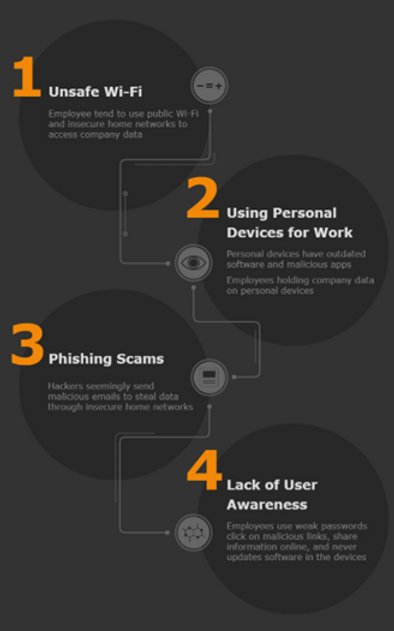
Study findings show that remote work makes staff happier, with 55 percent of commuters indicating increased levels of frustration caused by their commute. Companies that offer flexible working make a job more attractive to 70 percent of candidates. Additionally, organizations that permit remote working strategies increase retention rates by 10 percent. These facts indicate that remote working is not just a fad. Instead, it is here in perpetuity. Simultaneously, the coronavirus pandemic that has disrupted almost all aspects of life globally has resulted in the further rise of remote workers. Companies encourage their employees to operate from home to slow down the spread of the virus.
Fortunately, the current digital solutions enable organizations to evade past apprehension tied to employee productivity and governance issues. Some widely used technologies in remote working include collaboration and video conferencing tools. As a result, businesses can now enjoy benefits, such as increased productivity, a vast talent pool, better work-life balance, cost savings, and enhanced employee well-being. The sizable amount of people working from home has, in turn, opened a wide range of cybersecurity vulnerabilities on corporate networks because of the increased use of untrusted networks and unsanctioned devices to access sensitive information and systems. A conspicuous observation from the trend is that many organizations lack adequate preparations to support this spur-of-the-moment workforce. For example, a recent study by OpenVPN revealed that 90 percent of IT specialists believe that working from home is not secure. Additionally, 70 percent of security professionals think remote employees pose a higher risk than onsite workers. Cyber Risks of Working from Home The figure shows some of the leading cybersecurity concerns that organizations with remote workers face:

Cybersecurity Measures while Working from Home
Employee Responsibilities:
Company Responsibilities:
- UseVPNs: require employees to connect to an organization’s infrastructure through a VPN with proper encryption. Ensure that the VPN vendor provides patches and updates
- Userawareness: share training materials and tips to create and maintain cyber hygiene across the organization
- Backup: have a contingency plan for sensitive information
- Policies: develop and share procedures for handling tasks such as installation and use of software such as Zoom
- MDM:apply mobile device management solutions to set a standard configuration for connected devices. MDM enables an organization to lock unsolicited endpoints attempting to connect to the network remotely
Most of the cybersecurity measures recommended for securing work from home involve purchasing cybersecurity solutions, such as antivirus, VPNs, MDM tools, and so on. Besides, organizations now see the need to work with managed security service providers to meet the breakneck cybersecurity demands caused by remote work. However, since most businesses remain offhand with remote working, meeting security needs is daunting. Besides, many of them lack the internal expertise to help put proper security measures in place.
This observation means that SMEs face difficulties selecting the correct cybersecurity solutions and vendors, leading to delays in purchasing relevant security solutions.
Get Started with Elite Moran
EliteMoran develops content to support cybersecurity solutions sellers and buyers while supporting their business goals. Our senior-level cybersecurity researchers and writers create value-based content marketing strategies that map to the buying cycle, seasonal factors, reputation building, critical campaigns, and other factors that directly affect the bottom-line results. In addition, we develop SEO-optimized content to inform and influence potential customers’ purchasing decisions.

I’m your expert in cyber security and cloud computing content
About
Awards
News